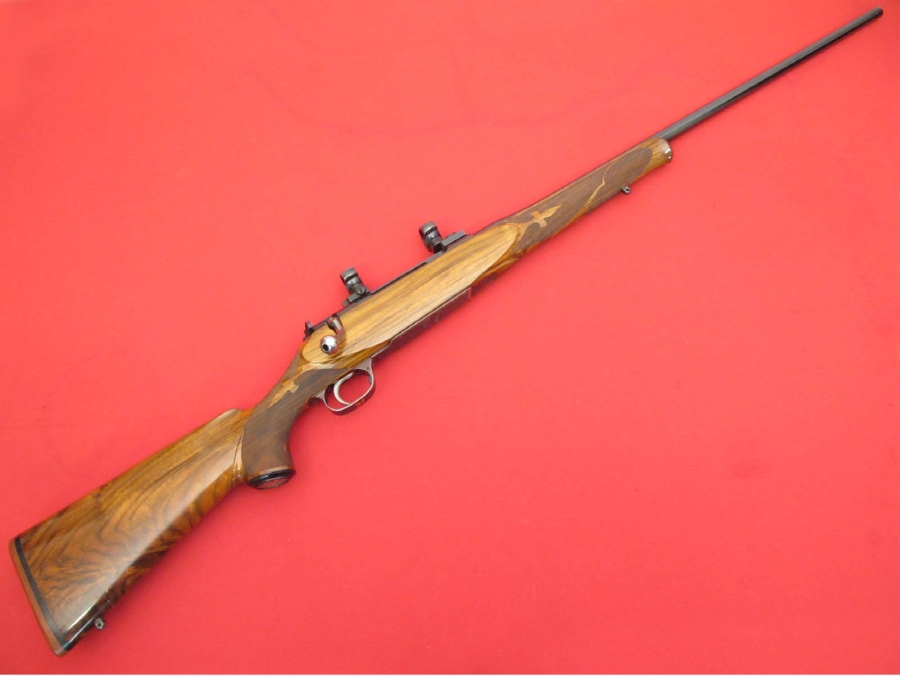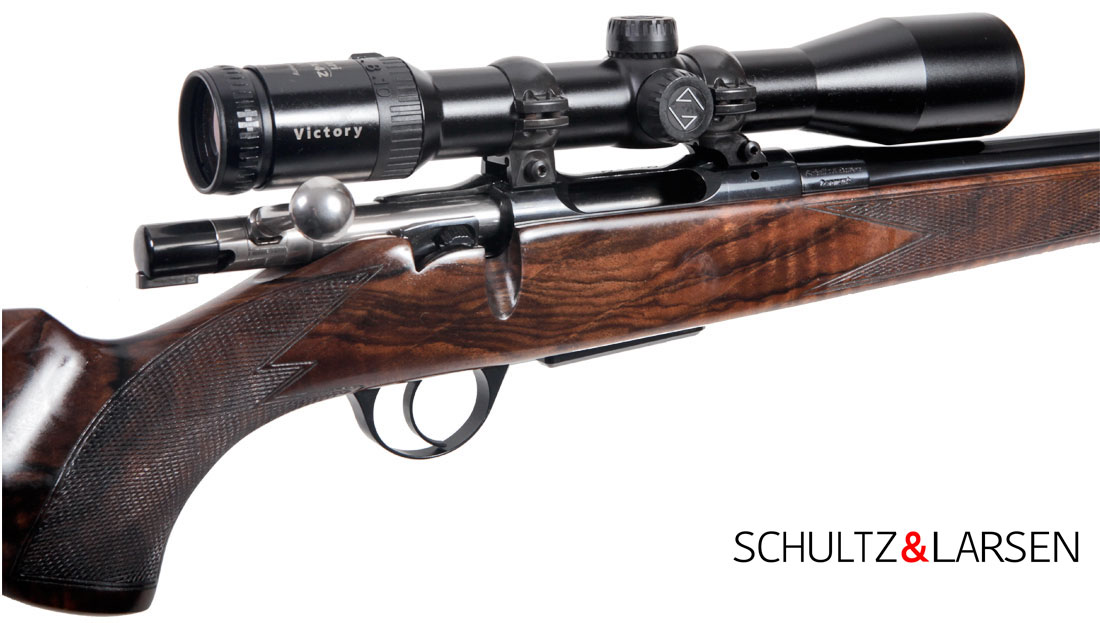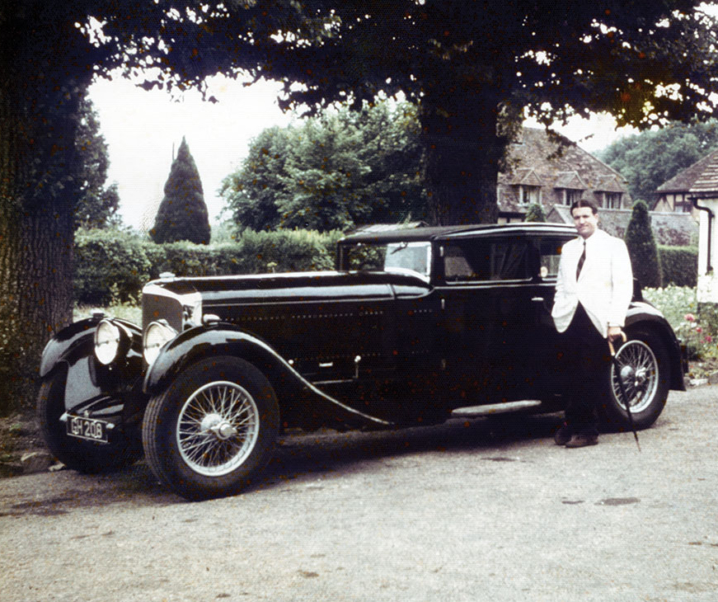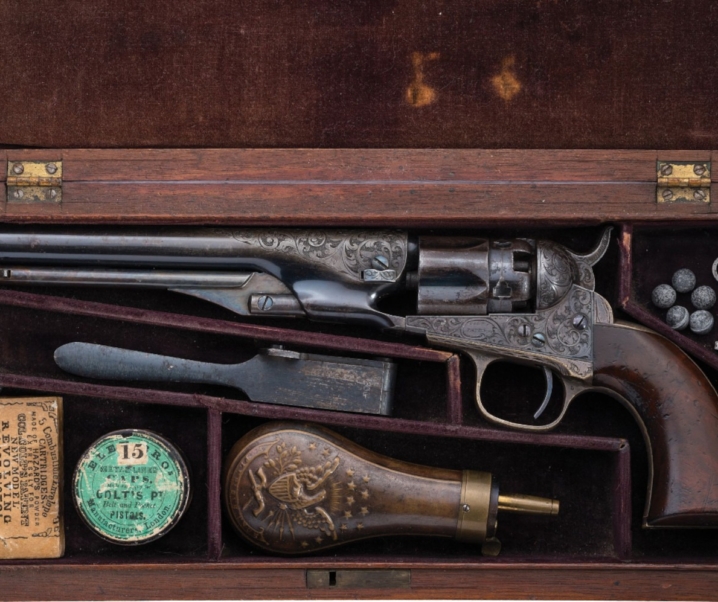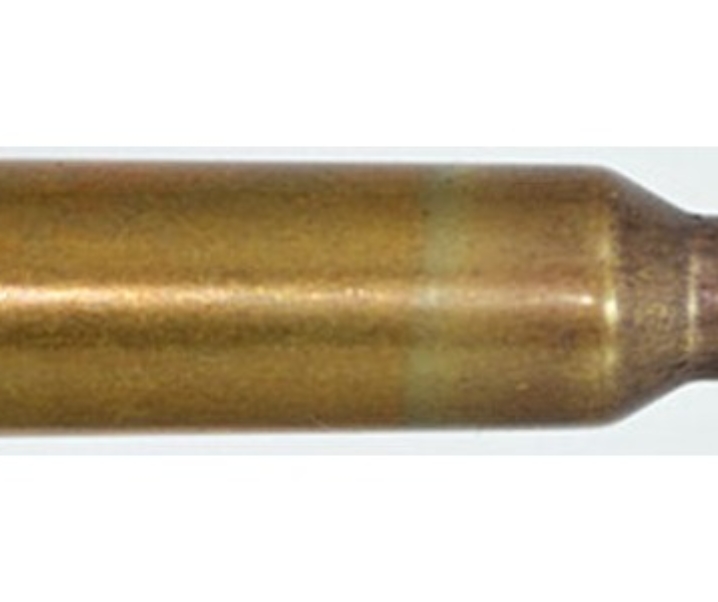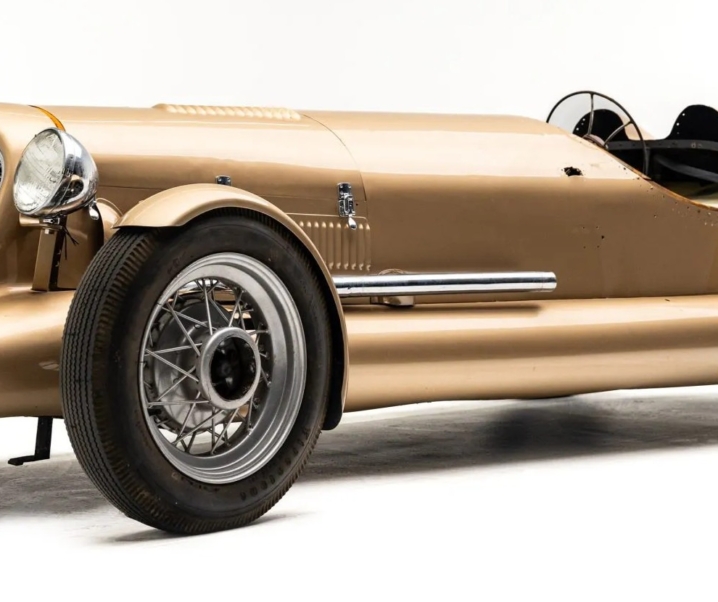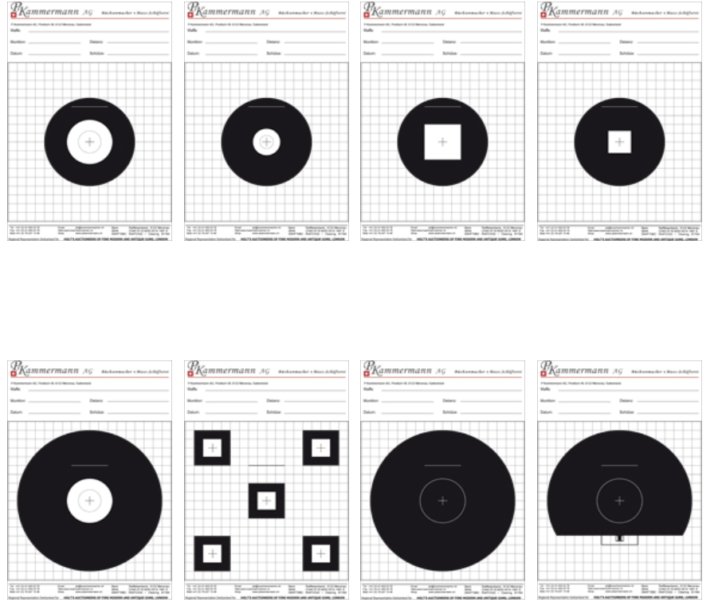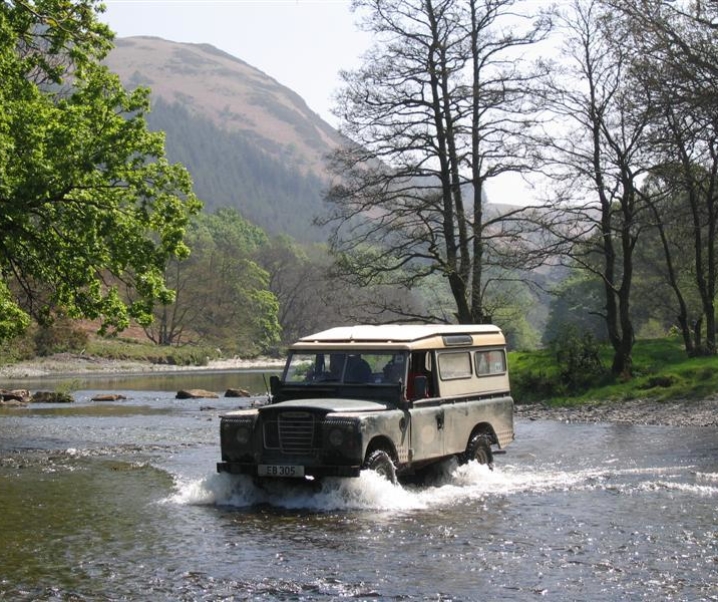Introduction
In the United States Danish riflemaker Schultz & Larsen is not particularly well known among recreational shooters and hunters, despite the fact that one of the most popular bolt action hunting rifles for Americans was once the Danish Krag–Jørgensen chambered for the 30-40 Krag cartridge. The Krag–Jørgensen rifle was launched into popularity in the United States because it had been adopted by the US military in 1892 after it had been subjected to competitive trials against the British Lee, Austrian Mannlicher, Swiss Schmidt–Rubin, and the German Mauser. Despite a half million Krag rifles being made at Springfield Armory it became quickly obsolescent and only served as the American primary service rifle for a short twelve years before being replaced by the 1903 Springfield. This chain of events ensured that a lot of military surplus Krag rifles were sold off to American sporting hunters who happily used them to bring home the venison, and ensured that this Danish rifle would be America’s most popular bolt action hunting rifle for decades.

Schultz & Larsen’s sporting rifles however were not launched into popularity by such a chain of events and, despite being highly respected in Europe and places such as Australia and New Zealand, have not yet made any significant inroad into the American sporting rifle marketplace. That’s a bit of a shame for Americans because most people who buy a Schultz & Larsen rifle tend to keep them, and keep them for so long that they leave their family members to “Fight over it when they’re gone”.
So if you’re interested in finding out about these rifles that people tend to keep until they “Shuffle off this mortal coil and go to join the choir invisible” then read on.
History
Like so many rifle makers Schultz & Larsen had small beginnings. Hans Schultz first established his gunsmith business in 1904 and was joined by his son in law Neils Larsen in 1910. Both of these men were Olympic shooting competitors and Neils Larsen won no less than five Olympic medals between 1912-1924. So not only were Schultz and Larsen gunsmiths, but they had the expertise of experienced Olympic competitors: this of course led to them gaining the respect and trust of Danish sporting shooters.

Niels Larsen’s son, Uffe Schultz Larsen joined the business later on and ultimately took on the role of manager: he also was a keen target rifle shooter.
After 1918, with the end of the First World War and the imposition of the Treaty of Versailles on Germany, she was forced to largely disarm and was forbidden from making arms. This resulted in a lot of excellent German rifle making machinery being offered for sale at very low prices and so Schultz & Larsen were able to acquire the equipment to manufacture rifles of their own. They began by making small-bore target rifles of their own design, and also took on manufacturing of other people’s designs such as those of Theodore Bergmann.
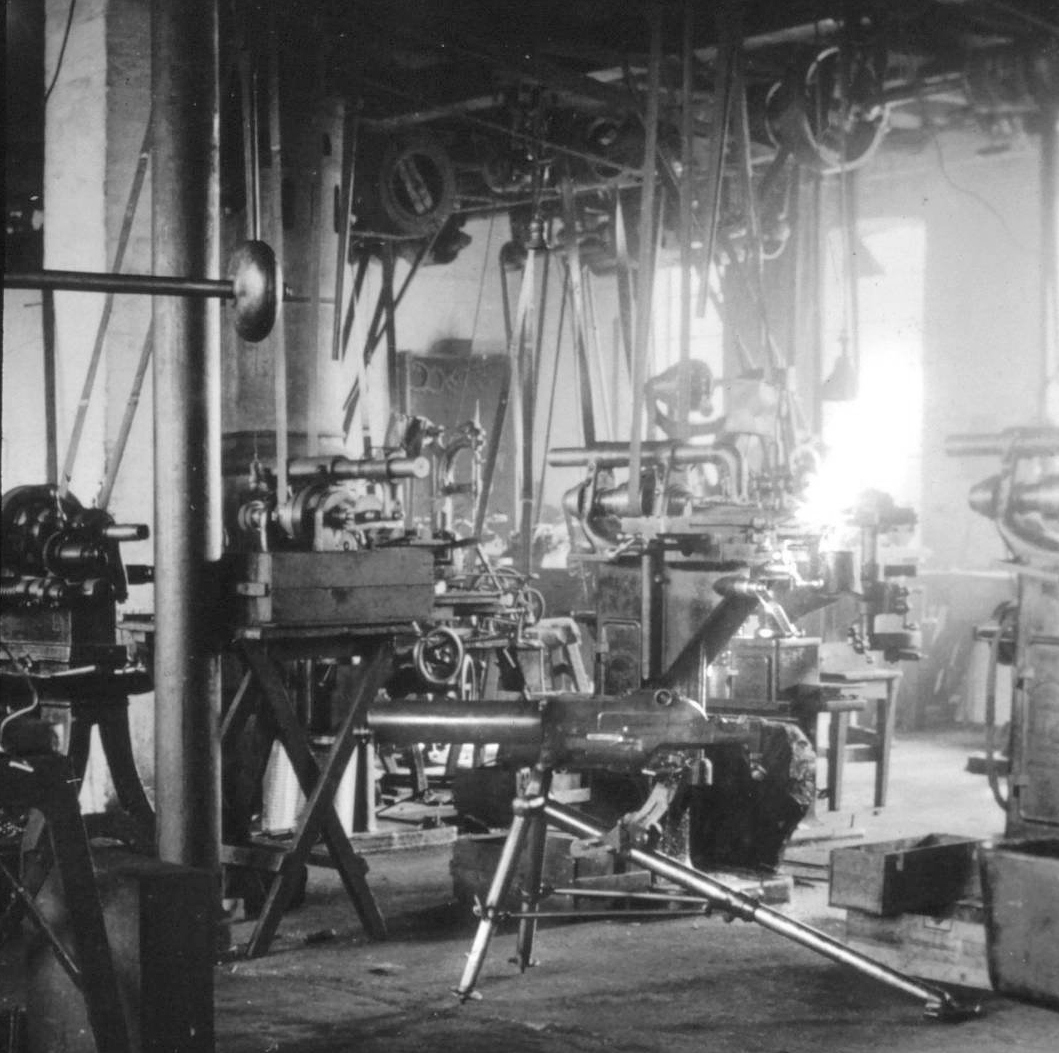
The years of the German Occupation during the Second World War created problems for Schultz & Larsen. They were given various work for the German war effort and were given the job of manufacturing RPLT 42 carbines for the Danish Coast Guard. Mysteriously however many of these carbines seemed to get stolen and ended up in the hands of the Danish Resistance. By 1943 the German Occupying Forces decided it might be better to simply close the factory, perhaps hoping to cut off supplies of arms to the resistance fighters.
What is of significance about the RPLT 42 rifles is that they were rear locking bolt actions with four locking lugs, giving them a bolt lift of just 45°. This would form the basis of the design of the post-war Schultz & Larsen sporting rifles.
At the end of the Second World War Schultz & Larsen found themselves with something of a windfall in the form of rather a lot of Mauser Karabiner 98k rifles left behind by German soldiers who didn’t need them anymore. Such rifles were perfect for conversion into sporting rifles, either for hunting or target shooting and so Schultz & Larsen were kept quite busy building very nice rifles based on these 98k’s.

One of the main improvements Schultz & Larsen were able to make to these 98k rifles was the fitting of their own cut rifled barrels. One of the things that Schultz & Larsen had been developing in the years of their manufacturing were their cut and lapped rifled barrels. Schultz & Larsen’s heat treated, stress relieved, cut and lapped rifle barrels had established an excellent reputation with Denmark’s target shooters, and with shooters throughout Europe and Britain. It would be the reputation of their barrels that would spread the name of the company and one of the developments they would be involved in would be the creation of the British “Swing” target rifle.
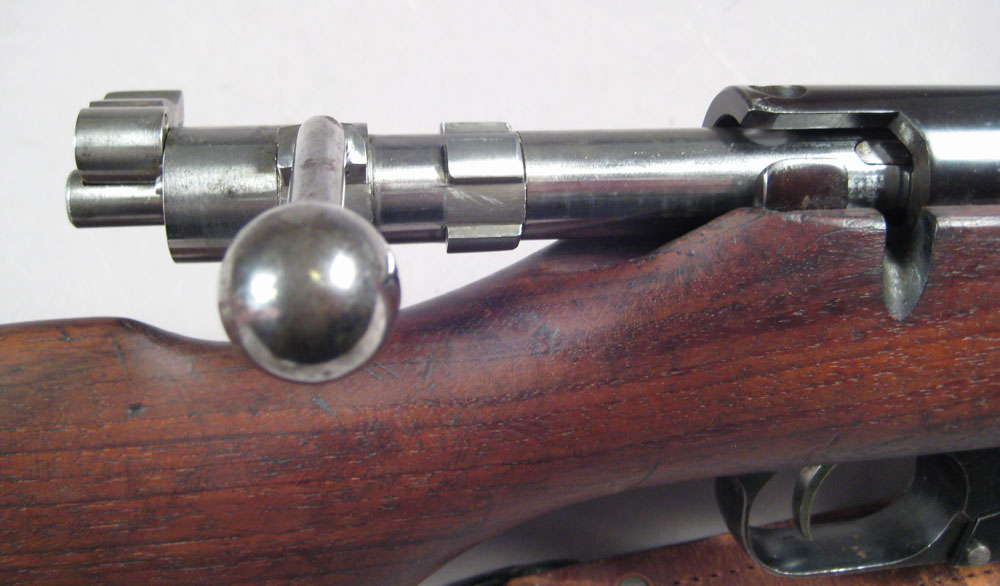
The Classic Rear Locking Otterup Rifle is Born
Schultz & Larsen did not simply stick to making Mauser 98k based sporting rifles however. They already had the ability to make the RPLT 42 with its four rear locking lug bolt action and they began to offer rifle models based on this action design. This was to be the quintessential Schultz & Larsen sporting rifle. The first version of this was the Model 38, followed by the Model 54 (target model) and Model 54J (hunting model).
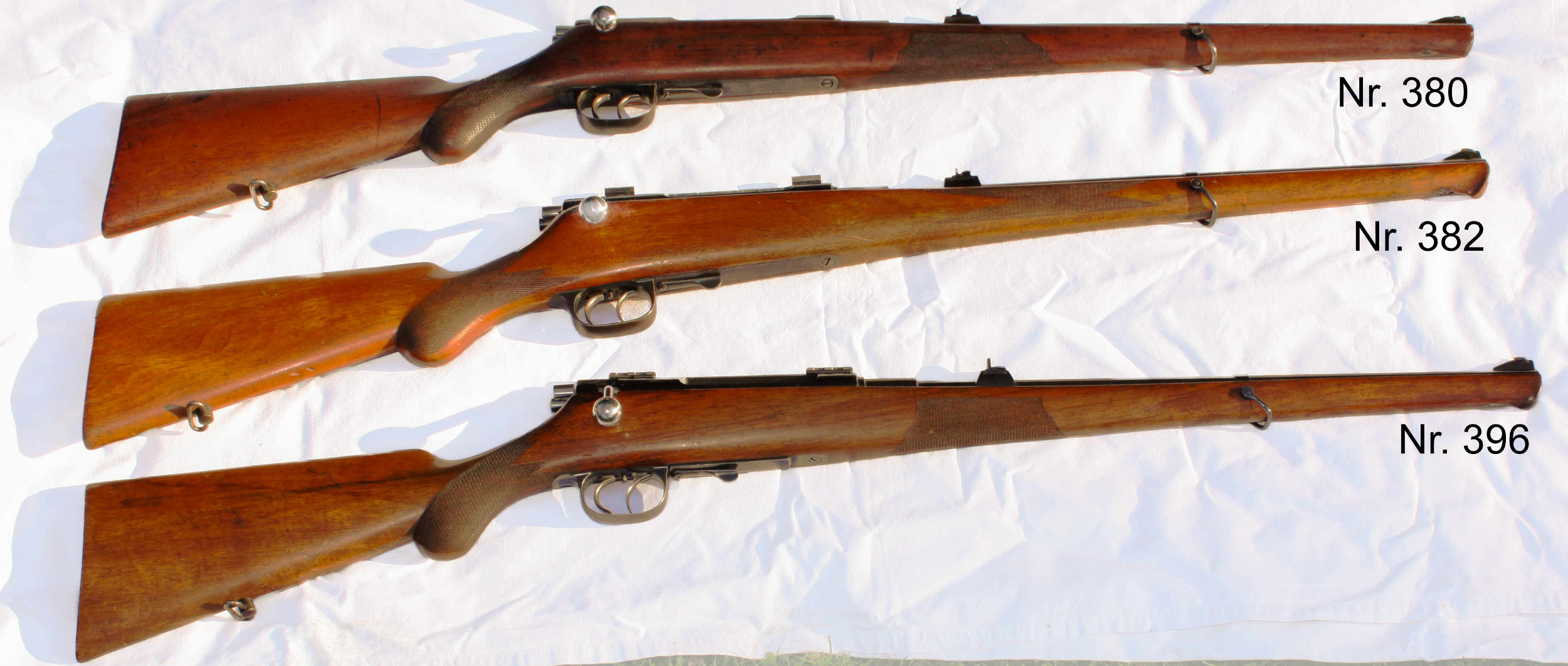
Despite being a rear locking action the Schultz & Larsen M38 was very strong. It had inherent strength and a crisp 45° bolt lift. This rifle was made for some of the heaviest sporting rifle calibers known during the 1950’s and 1960’s, including some of the early .378 Weatherby Magnum rifles which were built by Schultz & Larsen.

The safety catch of the M54 pushed forwards and backwards to engage/disengage. This safety would change on the M65, and change again on the M68.
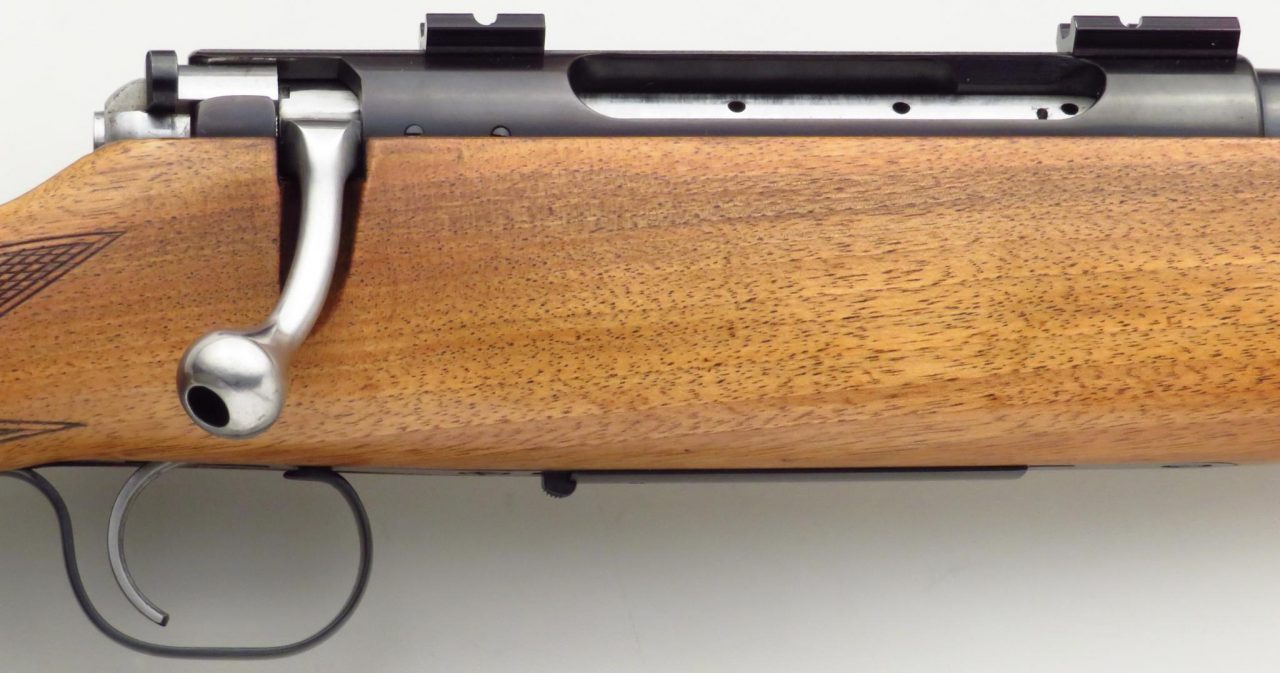
Phil Sharpe and the 7×61 Sharpe & Hart
Schultz & Larsen wanted to get a foothold in the US market and so they created a variant of the M54 which was called the M60. Around this time they were collaborating with American Phil Sharpe, the designer of the 7×61 Sharp & Hart cartridge. Phil Sharpe met with Neils Larsen and also worked with Swedish ammunition maker Norma to produce rifles and ammunition in his wildcat caliber. This indeed occurred and the 7×61 Sharpe & Hart enjoyed a brief season of popularity until Remington decided to create something slightly better, the 7mm Remington Magnum, and their Model 700 rifles that were significantly cheaper than the Schultz & Larsen. The result was that both the M60 and the 7×61 Sharpe & Hart fell into obscurity. The Schultz & Larsen M60 differed from the M54 in that it was fitted with a staggered Mauser style magazine, and the safety catch was re-located to the right side of the action. The M60 remained a cock on closing action however, like the M54, not something that Americans were likely to favor.
The Model 54J was succeeded by the Model 65. The Model 65 was the same action but now changed to the much preferred cock on opening, and with some differences in stock and finish. The Model 65 is the one that was chambered for the .308 and .358 Norma Magnum cartridges shortly after it was introduced in 1959: Model 65 rifles being available in those calibers in 1960. Production of the M65 ended in 1966 with 4,500 rifles having been produced: a quantity that Schultz & Larsen were very happy with.
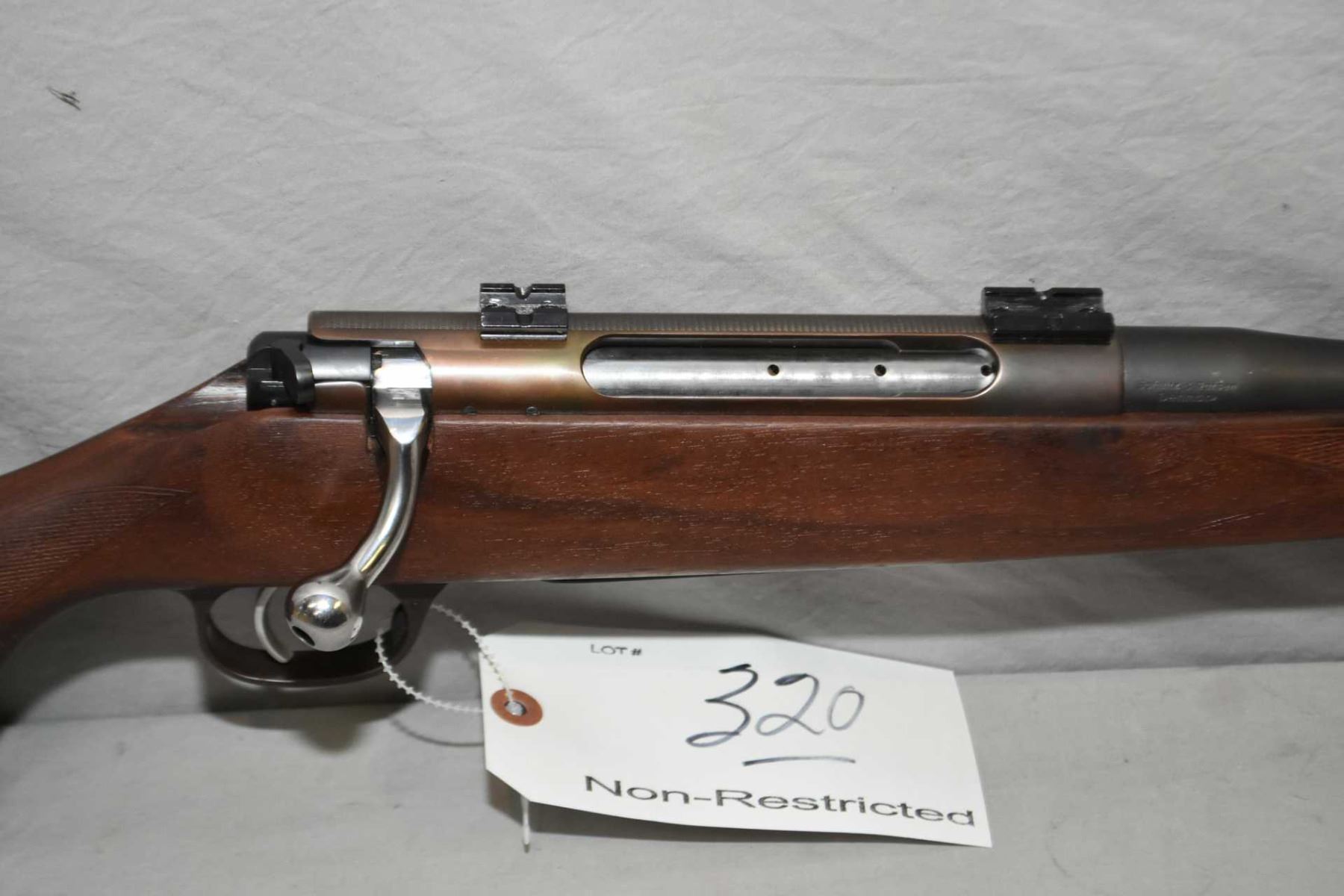
The next Schultz & Larsen model based on the four lug rear locking action was the Model 68. Production began in late 1966 with complete rifles becoming available in 1967. One difference between the M65 and M68 was the safety catch which was made to rotate vertically up and down very much like the safety catch used on BSA Mauser action sporting rifles of the 1950’s and 1960’s.
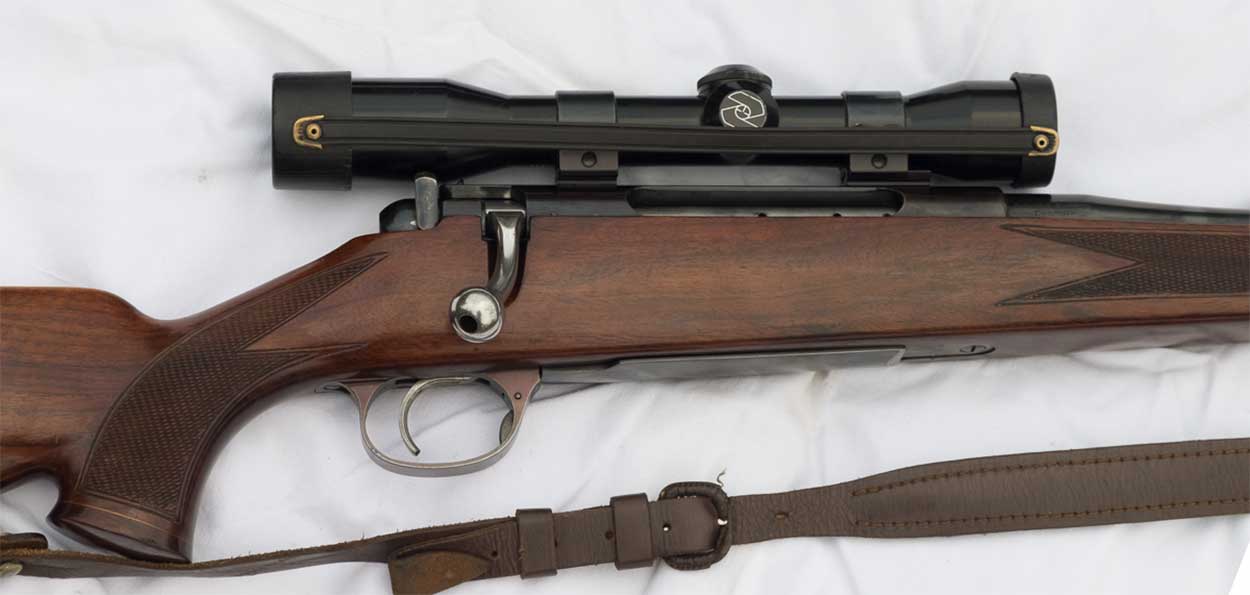
The other change made to the Model 68 was the lowering of the ejector port to facilitate lowering of the ejection angle. Whereas European rifle scope mounts tended to mount the scope quite high this was not the case for American mounts. American shooters tended to prefer a low mounted scope in the 1960’s and 1970’s and the most common scope used was either a 4x32mm or a 3-9x with a similar small sized objective lens. When a rifle scope was mounted low on a Model 65 there was a tendency for the ejected case to hit the windage turret and sometimes drop back into the action. Schultz & Larsen had rifle scopes made by Bisley with the windage adjustment on the left side, and the Hertel & Reuss rifle scopes as used on the Weatherby rifles had both adjustment turrets on the top of the scope (See the picture of the .378 Weatherby Magnum above). Such things were not a substitute for lowering the ejection angle to completely eliminate the problem however and so this was done on the Model 68.
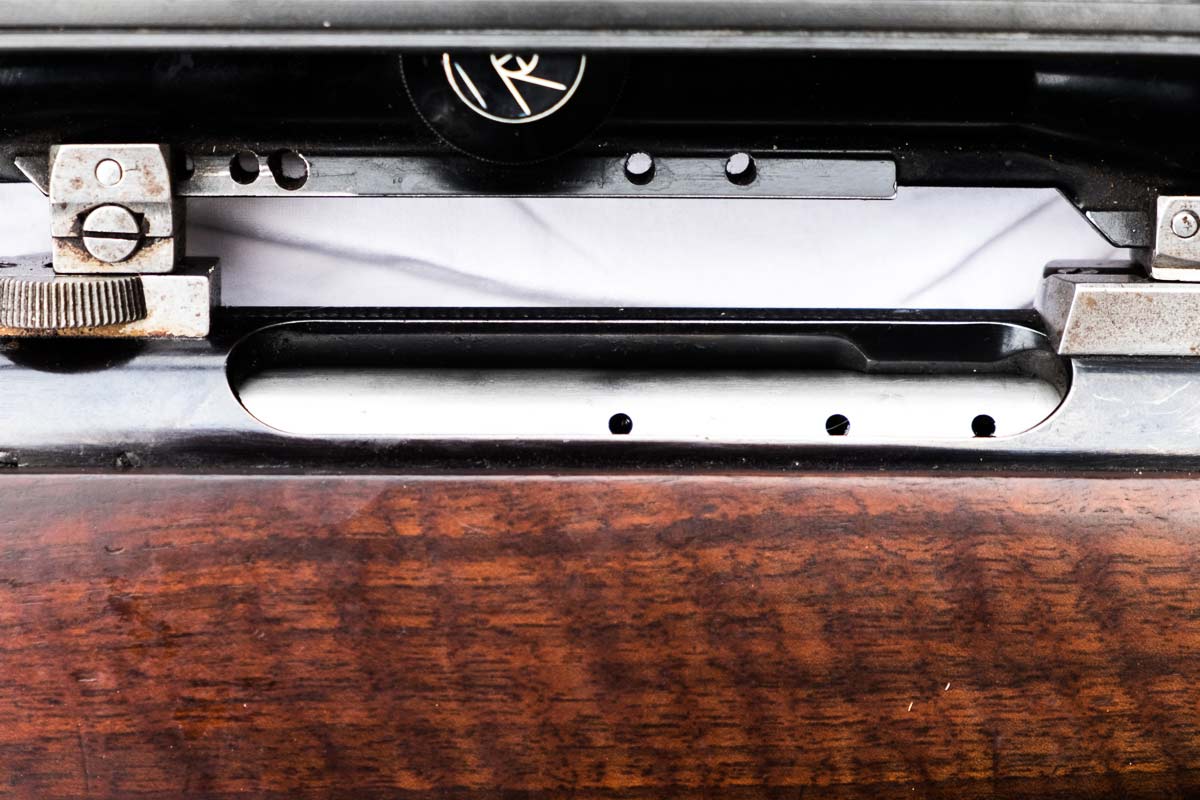
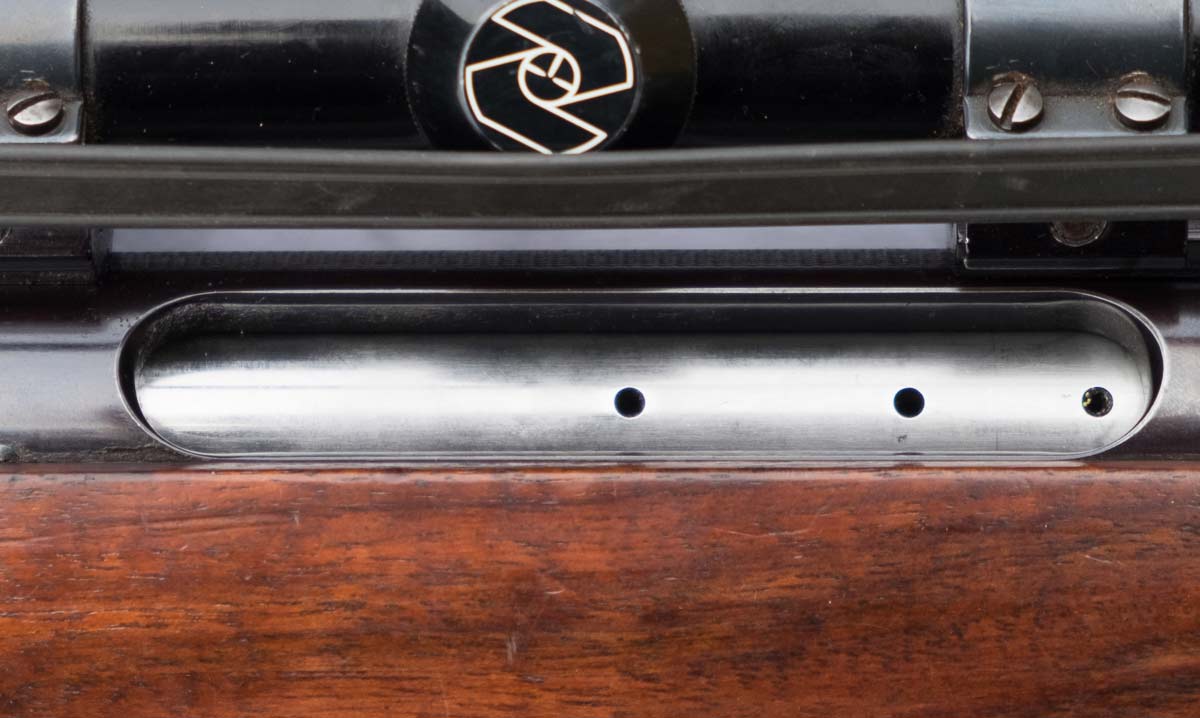
The M68 was almost the end of the line for the Schultz & Larsen rifles based on the rear locking action of the original RPLT 42. It would be followed by the M84 and M100 which were really only model updates based on it. Schultz & Larsen had spent many years trying to appeal to the US market but despite their rifle’s quality and accuracy had never been able to make the sort of impact they had hoped for. If you have the opportunity to try one of these older original Schultz & Larsen rifles made at their Otterup factory you will come to appreciate the quality, and the qualities that ensured that once someone owned one they were unlikely to sell it. However, rear locking actions did not sell well to people who were reloaders because case life was inevitably shorter than for a front locking action. The 1960’s in particular saw a plethora of rear locking European rifles including the Sauer (and Colt Sauer), Steyr Mannlicher, and Mauser 77, as well as any of the Schutz & Larsen M60, M65, M68, M84 or M100. None of them gained widespread acceptance in the United States although, try a Colt Sauer, a Mauser 77 or one of the rear locking Otterup made Schultz & Larsen rifles and you’ll likely figure out why people love them, especially people in places like Europe where shooters are much less likely to be reloaders. In order to have a chance at penetrating the US market what Schultz & Larsen was going to need was a complete change to a front locking action. That was to be the next step.
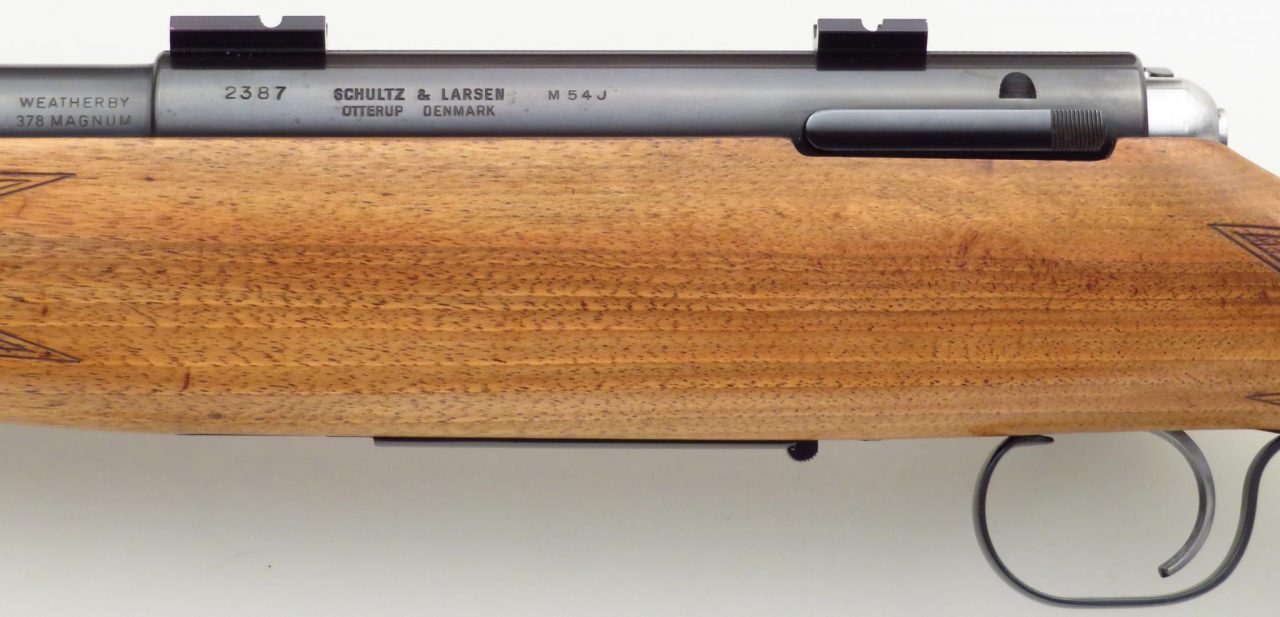
Current Production Models
In 1994 the original owners of Schultz & Larsen sold their company to a gentleman named Jørgen Nielsen who subsequently sold it to another gentleman named Morten Krogh. Production was moved from the original Otterup works to the town of Hørning in Denmark. With the move to new ownership and a new location it seemed time for a new design and so the M97 was born. This model would feature a front locking action, and later into its production would introduce an interchangeable barrel system: something that would work through a couple of variations before settling on the current system.

Rifle designs tend to follow trends, much as automobiles do, and the Schultz & Larsen follows the current trend quite faithfully. The bolt is front locking with three locking lugs, giving a bolt lift of 60°. The bolt face is recessed and has a good sized claw extractor and a spring plunger type ejector. So this is a push feed action in which the large diameter bolt and precision machining make for a very smooth cycling action that closes like a bank vault door.
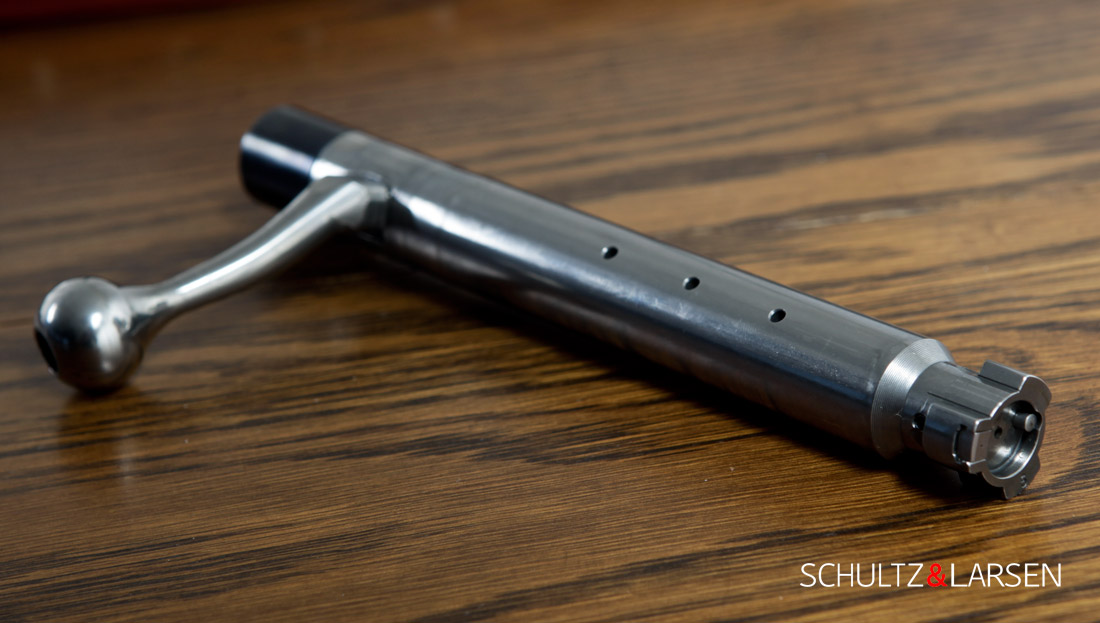
The bolt has three gas vents to direct gases from a ruptured case head out of the bolt, and there is also a gas vent in the right side of the receiver ring. It is a system that provides strength and good gas venting, and the bolt handle root also sits in the receiver providing a final measure of safety in case the cartridge case failure is of the worst kind. This is an action designed with an excellent level of fail-safe.

The magazine of the M97 is a single column detachable type, which can provide for fast reloading if the shooter is in possession of a spare magazine or two.

Current Models
Legacy
The Legacy is the small action Schultz & Larsen rifle chambered for the .222 Remington, .223 Remington, and .300 Blackout. This small rifle has a 53.5cm barrel and tips the scales at 2.8kg making it a very modest little burden to carry around all day.

The Legacy magazine holds four rounds and with an additional round in the chamber rifle capacity is 4+1. The Legacy has an interchangeable barrel system but, barrels can only be interchanged with other Legacy calibers because it is built on the small size action. So it would be possible to switch barrels between .223 Remington and .300 Blackout for example.
You’ll find the Legacy on Schultz & Larsen’s international website if you click here.
You’ll find the Legacy on Schultz & Larsen’s Australian website if you click here.
Classic DL
The Classic DL is an affordable Schultz & Larsen rifle made to high standards as a practical hunting rifle. The stock is Grade I walnut and has cut checkering. The barrel is the standard Schultz & Larsen cut and lapped rifled barrel which is available in a wide range of calibers and styles.

Listed calibers for the Classic DL are as follows:-
Standard Calibers
22-250, .243 Winchester, 25.06, 6.5/284, 6,5×55 , 270 Winchester, 7mm-08, 7×64, .308 Winchester, .30-06, 8X57 JS.
Magnum Calibers
.270 WSM, 7mm Remington Magnum, .300 Winchester Magnum, .300 WSM, .338 Winchester Magnum, .358 Norma Magnum.
Like the other models in the full sized action the single column detachable magazine capacity is three rounds.
You will find the Classic DL on the Schultz & Larsen international website if you click here.
Traveler
The Hunter Traveler is a base model hunting rifle available in a wide range of calibers. The rifle features an all steel construction, like all Schultz & Larsen rifles, and weighs in at 3.4kg. The metal parts of the Hunter Traveler are treated for corrosion resistance.

The Traveler is available chambered as follows:-
Standard Calibers
22-250, .308 Winchester, .243 Winchester, 25.06, 6.5/284, 6,5×55 , 270 Winchester, 7mm-08, 7×64, .30-06, 8X57 JS.
Magnum Calibers
.270 WSM, 7mm Remington Magnum, .300 Winchester Magnum, .300 WSM, .338 Winchester Magnum, .358 Norma Magnum, (also listed as optionally available in .416 Taylor, .458 Winchester Magnum on the Australian Schultz & Larsen website).
Magazine capacity is three rounds, with the option to add an additional round in the chamber making 3+1 capacity. There is also a five round magazine available which provides a 5+1 capacity. Barrel length options range from 56cm to 65cm with a range of diameter options from 15mm-20mm and optional twist rates. Barrels can be ordered with or without fluting and the fluting can be either straight or twist in style.
You’ll find the Traveler on Schultz & Larsen’s international website if you click here.
You’ll find the Hunter Traveler on Schultz & Larsen’s Australian website if you click here.
Ambassador
The Ambassador is a luxury version of the Schultz & Larsen rifle. In base form it is supplied with Grade I walnut for its stock but can be optionally ordered with higher grades of wood, and with tasteful engraving
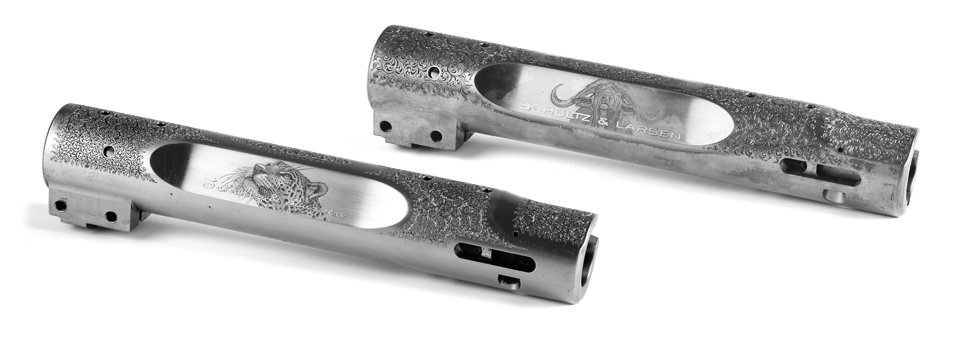
The general specifications of the Ambassador are the same as for Schultz & Larsen’s other models with the addition that it can be ordered in .458 Winchester Magnum. So this model can be configured as a safari rifle for that once in a lifetime trip to Africa and it can also be ordered in any of the other smaller calibers for general deer and wild boar shooting.

You will find the Ambassador on Schultz & Larsen’s international website if you click here.
Victory
The Victory is the top of the line Schultz & Larsen sporting model, available in right or left hand with a Monte Carlo comb and higher grades of walnut and finish. The Victory is fitted with the standard two-stage Schultz & Larsen trigger but can be ordered with the double-stage Match trigger as an option. The Match trigger has a first stage that takes up 60% of the pull weight, and leaves a crisp second stage to discharge the rifle. The Victory offers walnut stock wood from Grade I to Grade V and also Exhibition, and also various engraving options. This model is also available in .458 Winchester Magnum as a safari rifle and in all the other smaller calibers for more general hunting.

The Victory is available in the same range of calibers as the Traveler and with the same barrel options.
You’ll find the Victory on Schultz & Larsen’s international website if you click here.
You’ll find the Victory on Schultz & Larsen’s Australian website if you click here.
Tactical
The Tactical model is available with a variety of barrel lengths up to 74cm and 27mm diameter down to 56cm and 16mm diameter. Action can be either steel or alloy, and barrels are interchangeable with the Hunter Traveler and Victory models.

The Tactical comes in two models, the Bolly Carbon and the PSE Carbon.
Caliber range is as for the Hunter Traveler and Victory models.
You can find the Tactical on Schultz & Larsen’s international web site if you click here.
The Schultz & Larsen Switch Barrel System
The current production Schultz & Larsen rifles feature a convenient switch barrel system as do many European rifle makers nowadays. The Schultz & Larsen system is very straightforward and practical. To install a barrel in the receiver the barrel is first inserted into the receiver and the bolt closed and locked down. The front locking lugs lock directly into recesses in the barrel, not the receiver. With the bolt locked down the cartridge headspace is set, so it is essential not to omit this step. Once the barrel is in place and locked to the bolt there are two securing screws located on the right side of the action ring. The rearmost screw is fastened first, and then the one ahead of it. Once the barrel is installed the stock is re-fitted and the rifle is then ready for use. Removal of the barrel is simply the reverse of the above procedure.
Below is a video by Shooting News demonstrating the switch barrel feature and providing a succinct overview of the current production Schultz & Larsen rifle.
[arve url=”https://www.youtube.com/watch?v=F9CG9q5K4ys” /]
Rifle Scope Mounting Systems
The current model Schultz & Larsen comes with two possibilities to mount optical sights: the top of the action is drilled and tapped for Weaver or similar style bases, and also has Schultz & Larsen’s own integrated dovetail system machined into the top of the receiver. The Schultz & Larsen integrated system provides for two positions for mounting the rifle scope: summer and winter. The summer position mounts the rifle scope in its most forward position because the shooter will only be wearing thin clothing which tends to bring the rifle scope closer to the shooter’s eye. The winter position mounts the rifle scope a half inch further to the rear to compensate for thick winter clothing.
The video below is provided by Schultz & Larsen
[arve url=”https://www.youtube.com/watch?v=jEDjw6EVUs0″ /]
Conclusion
Schultz & Larsen have built for themselves an enviable reputation for quality and for innovation in design. The current model is not so much innovative as it is a progressive development that has led to an excellent design. Its design is not particularly different to a number of top quality European rifle designs, but it offers Schultz & Larsen quality, and their legendary cut and lapped rifle barrels. These rifles are available in right or left hand configurations and to appreciate the range of barrel, stock and other options it is best to spend some time browsing Schultz & Larsen’s international website.
Schultz & Larsen rifles have never been cheap, but have always been a cut above most of their competition: that is what has built the reputation of the company, carried by the word of mouth recommendations of satisfied owners. As we said in the beginning, once someone owns a Schultz & Larsen they are unlikely to want to part with it, and that sums up what makes these rifles so special. If you come across a used Otterup made original Schultz & Larsen its worth picking it up and getting a feel for it. Beware however that once you’ve done that you may be unwilling to hand it back to its owner. Similarly the current model, with its front locking action, is arguably an even better rifle than its forebears. If you are in the market for a quality hunting rifle then a Schultz & Larsen should be one that you take the time to evaluate as a potential purchase. That being said these rifles are available in Britain and Europe, Australia and New Zealand, but not readily available in the United States, despite the fact that the original Schultz & Larsen was Roy Weatherby’s rifle of choice for his .378 Weatherby Magnum back in the 1950’s. But if you live in a place where they are available then they are well worth a look.
If you are in Great Britain you will find Schultz & Larsen rifles at the AlanRhone website if you click here.
You will find the Schultz & Larsen instruction manual for the current production rifles if you click here.
(Feature image at the head of this post courtesy North West Armory).

Jon Branch is the founder and senior editor of Revivaler and has written a significant number of articles for various publications including official Buying Guides for eBay, classic car articles for Hagerty, magazine articles for both the Australian Shooters Journal and the Australian Shooter, and he’s a long time contributor to Silodrome.
Jon has done radio, television, magazine and newspaper interviews on various issues, and has traveled extensively, having lived in Britain, Australia, China and Hong Kong. His travels have taken him to Indonesia, Israel, Italy, Japan and a number of other countries. He has studied the Japanese sword arts and has a long history of involvement in the shooting sports, which has included authoring submissions to government on various firearms related issues and assisting in the design and establishment of shooting ranges.

